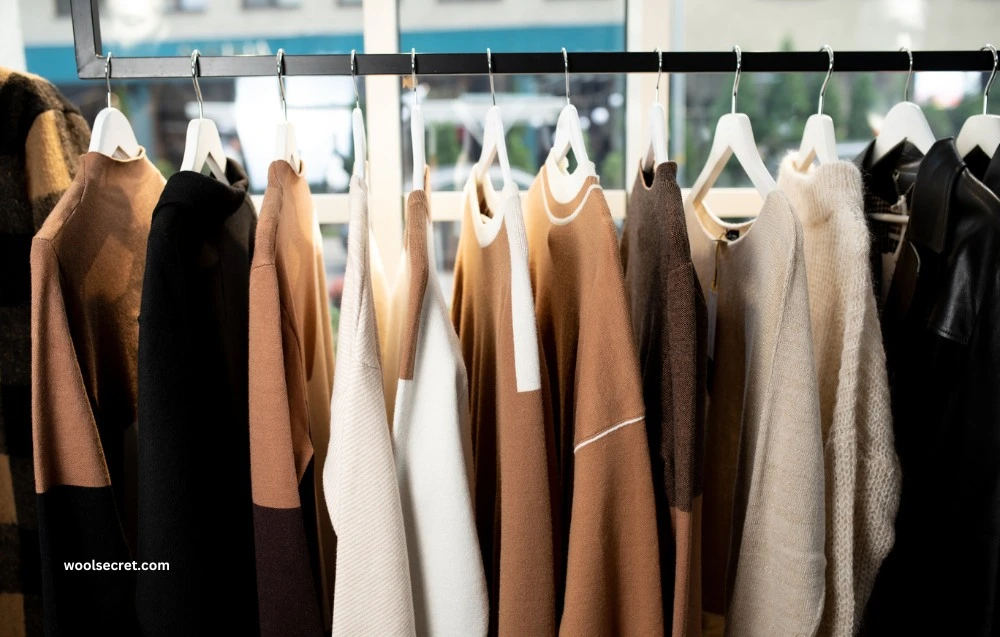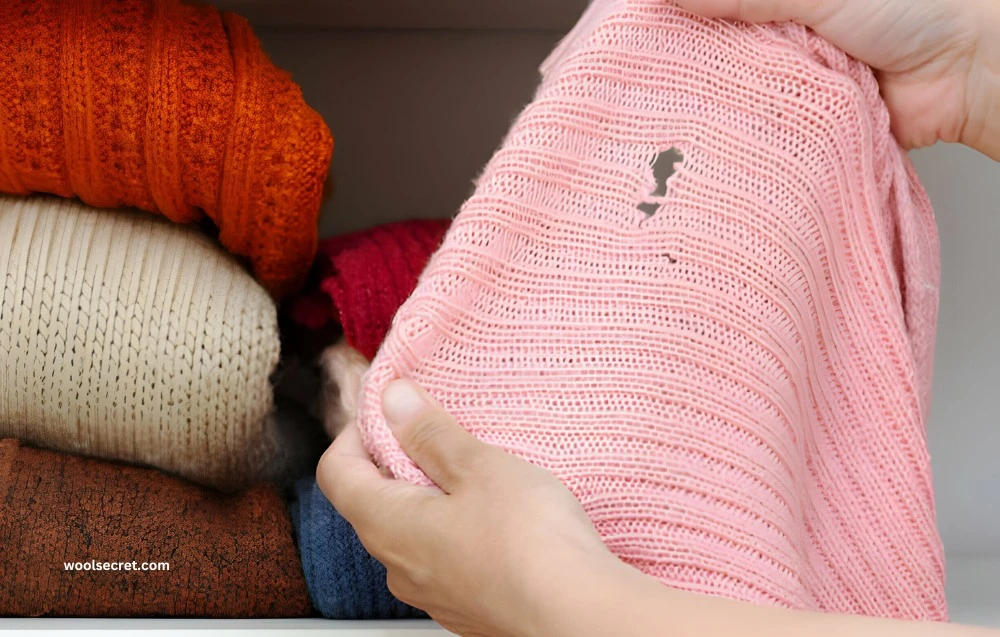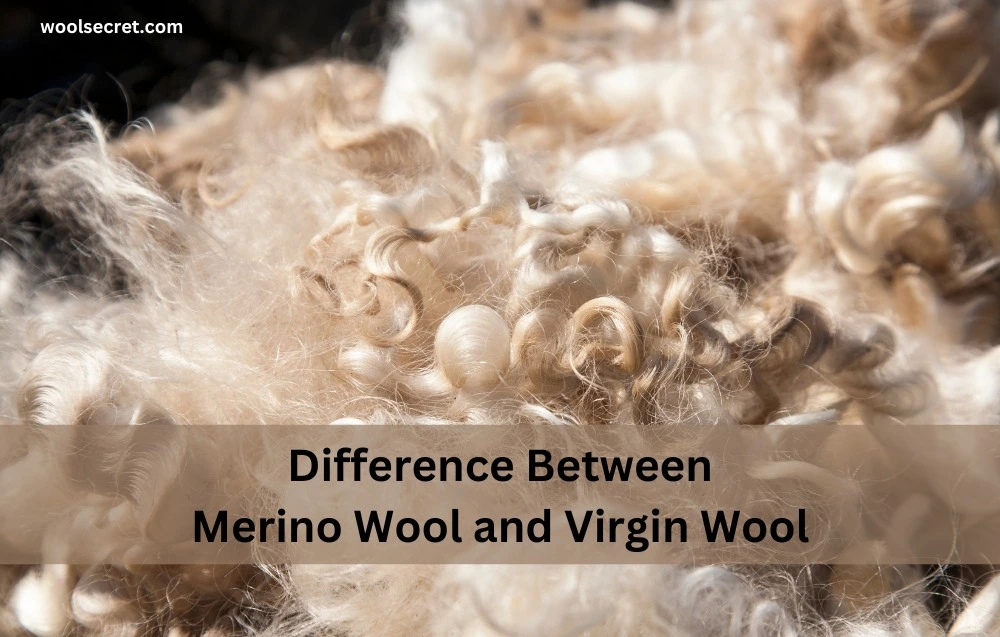As conscious consumers, we’re always on the lookout for sustainable and eco-friendly alternatives to our favorite products.
For those who love the softness, warmth, and versatility of merino wool but are concerned about its impact on the environment and animal welfare, this blog post is dedicated to you.
We will explore the top merino wool alternatives, showcasing the best options to consider for your clothing. Different from Virgin Wool, These alternatives strike a balance between quality and ethics.
When choosing the best clothing, fabric is one of the biggest factors. Merino wool is an ultimate travel fabric, but it can be expensive, delicate, or unsuitable for those allergic.
If merino wool isn’t your style or doesn’t fit your budget, our guide will help you find that perfect alternative, aligning with your values and needs.
Best Alternative Fabrics to Merino Wool
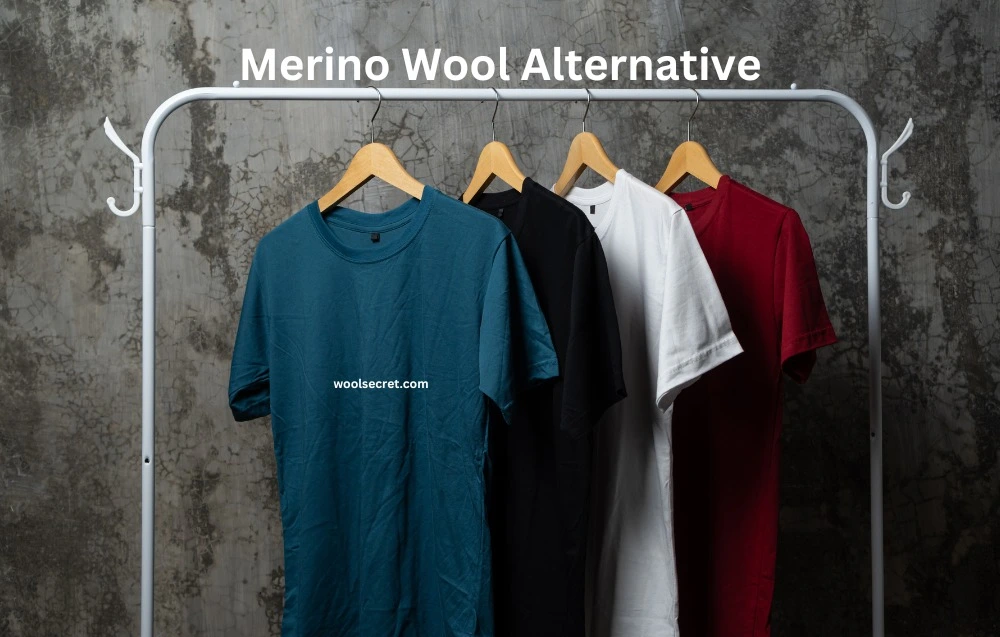
For those seeking environmentally friendly substitutes for merino wool, both vegan and non-vegan sustainable fabrics offer similar benefits, studies show
Here Are Merino Wool Alternatives:
- Cashmere
- Alpaca
- Bamboo
- Tencel
- Recycled Polyester
- Silk
- Modal
- Synthetics
If you’re allergic to merino wool or seeking a suitable alternative, or or tired of Merino Wool’s Downsides. Read more and explore these 18 best fabric alternatives. They are great options due to their unique properties and versatility.
Before choosing an alternative, keep these benefits of merino wool in mind
Merino wool is regarded as one of the finest and softest wools, a highly versatile material for clothing. It surpasses natural fibers like Cotton in many aspects, making it a Superior Choice for Various Uses.
Advantages of Merino Wool:
- Odor Resistant: Less frequent washing is needed.
- Quick drying: Convenient for on-the-go use.
- 4 season fiber: Adapts to both heating and cooling needs.
- Moisture Wicking: Effective even in vapor state.
- Strong and Durable: Withstands regular wear and tear.
- Elastic: Comfortably conforms to body shape.
- No itching: Delicate fabric ensures comfort.
- Protection against sun’s harmful rays.
- Static Resistant: Prevents sparking/static electricity.
Merino wool’s popularity as a fabric recommended for travel is due to its ability to wick away moisture, being lightweight, ultra warm, and durable. It’s long-lasting and versatile, ideal for packing light.
The Main Advantage of Merino Wool for travelers is that clothes can be reworn several times without washing, simplifying travel needs.
Vegan-Friendly Alternatives
1-Synthetic
Synthetic fabrics, made from chemicals, often boast better properties than natural fibers like cotton or silk. Common types include polyester and acrylic, known for their versatility.
They are a less expensive option compared to merino wool, hard-wearing, and great for wicking moisture. This makes them practical for a Variety of Uses.
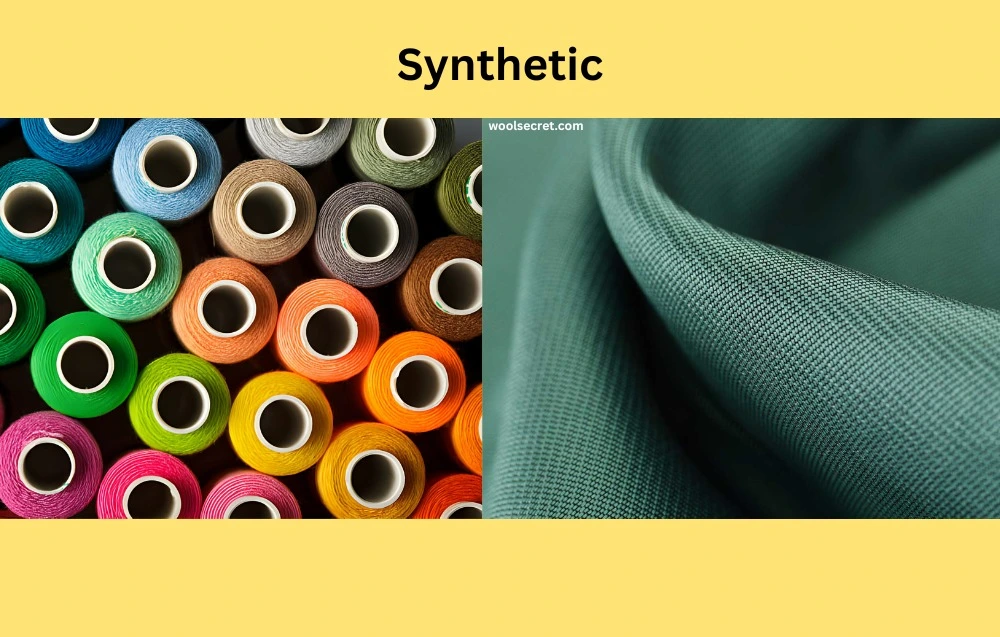
A reader mentioned, ‘People often criticize Polyester, yet its cost-effectiveness and long-lasting nature are what I value. I prefer a blend of fabrics for a balanced feel.”
For example, this sweater from Quince, made from Mongolian cashmere, combines softness and style with the practicality of synthetic fibers.
2-Modal
Modal, a type of rayon made from beech trees, is known for its soft and smooth texture. It offers bleaching capacity, making it versatile in color and design.
This fiber feels fresh and is very absorbent, maintaining its shape even when wet. Its lovely drape is due to its weight, adding a touch of elegance.
Modal is super comfortable and excels as a great moisture-wicking fabric. A reader said it’s a man-made fiber from cellulose, sharing similar properties to cotton.
Its thin fabric quality makes it great for layering. Its lightweight nature doesn’t compromise on warmth, offering versatility across seasons.
Another advantage is that Modal can dry fast and not feel sweaty, a significant benefit for active or daily wear, especially in warmer climates.
3-Cotton
As someone who values natural fibers and comfort, I’ve often worn cotton over the years and have gathered some thoughts on how it compares to merino wool.
One of the primary benefits of cotton is its breathability. It’s a lightweight fabric that allows air to circulate, keeping you cool in warm weather.
Cotton is also soft and comfortable, and notably easy to care for. It can be Machine-Washed and Dried, making it user-friendly.
Cotton is widely available and often less expensive than merino wool or other specialty fibers, an excellent choice for those on a budget who desire a comfortable, natural fabric.
However, its disadvantages include not being as moisture-wicking as merino wool, making it less ideal for intense physical activity or outdoor adventures where sweat and moisture are a concern.
Cotton also has a tendency to shrink and lose its shape over time, especially if not cared for properly.
While it’s a sustainable choice in some respects, the production of cotton requires a lot of water and pesticides, which can be damaging to the environment.
4-Bamboo
As someone who loves the softness and breathability of merino wool, I was initially skeptical when I first heard about bamboo fabric as an alternative.
But after trying it out, I was impressed! Bamboo fabric is incredibly soft and silky, with a luxurious feel that is similar to high-quality cotton. It’s naturally moisture-wicking, making it a great choice for outdoor activities or workouts.
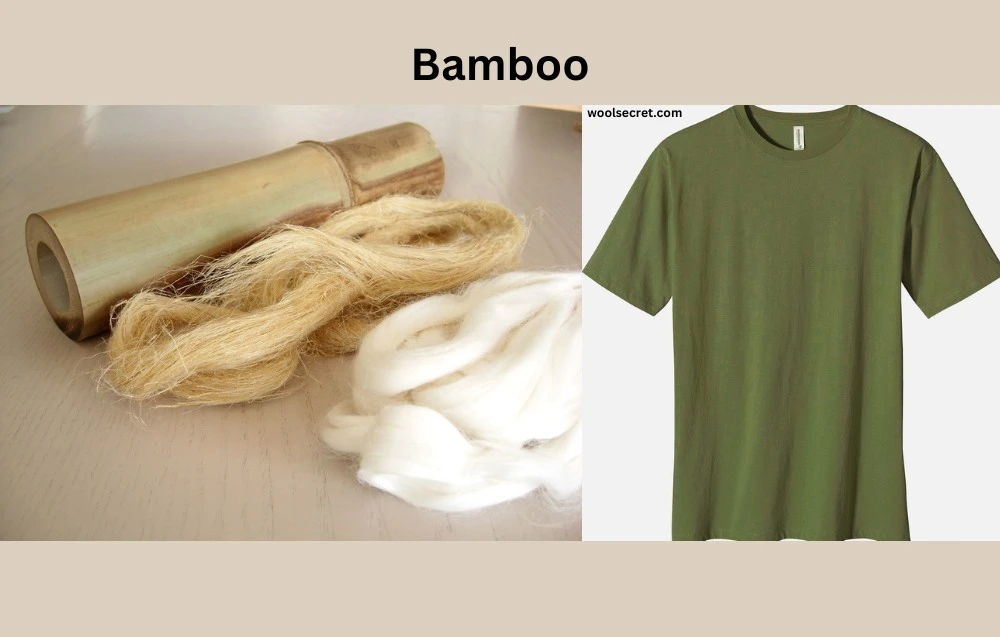
I admire the sustainability of bamboo. It’s a renewable resource that requires less water and pesticides to grow than traditional cotton, making it an eco-friendly option.
What’s more, bamboo clothing is durable and can last for years with proper care. This longevity adds to its appeal as a sustainable choice.
However, there are downsides. While breathable, bamboo doesn’t provide the same level of warmth as merino wool, which may not make it The Best Choice For Cold Weather.
Also, some bamboo fabrics can be prone to pilling or fading if not cared for properly. This requires a bit more attention during maintenance.
5-Fleece
Fleece often appears on lists of vegan-friendly fabrics. Typically, it’s made from synthetic fibers like polyester, or a blend of materials, making it vegan-friendly.
However, some types of fleece may contain animal products. For instance, manufacturers might use wool or shearling to create sherpa fleece, a material with a soft, fuzzy texture similar to sheepskin.
For those interested, we have a detailed article outlining the differences between merino wool and fleece. It’s worth a read for more insights.
Fleece offers several advantages: it’s less expensive, widely available, and easier to care for than wool, making it a great choice for budget-conscious consumers.
It’s also ideal for outdoor activities like hiking and camping, being lightweight, warm, and moisture-wicking. Despite being cozy, it doesn’t match wool in terms of natural feel and breathability.
However, fleece can be prone to pilling and static cling, which some may find frustrating. Proper care can mitigate these issues to an extent.
6-Tencel
Tencel, a sustainable substitute for wool, is made from wood pulp. The pulp is dissolved in a non-toxic solvent, then spun into fibers and woven or knit into fabric.
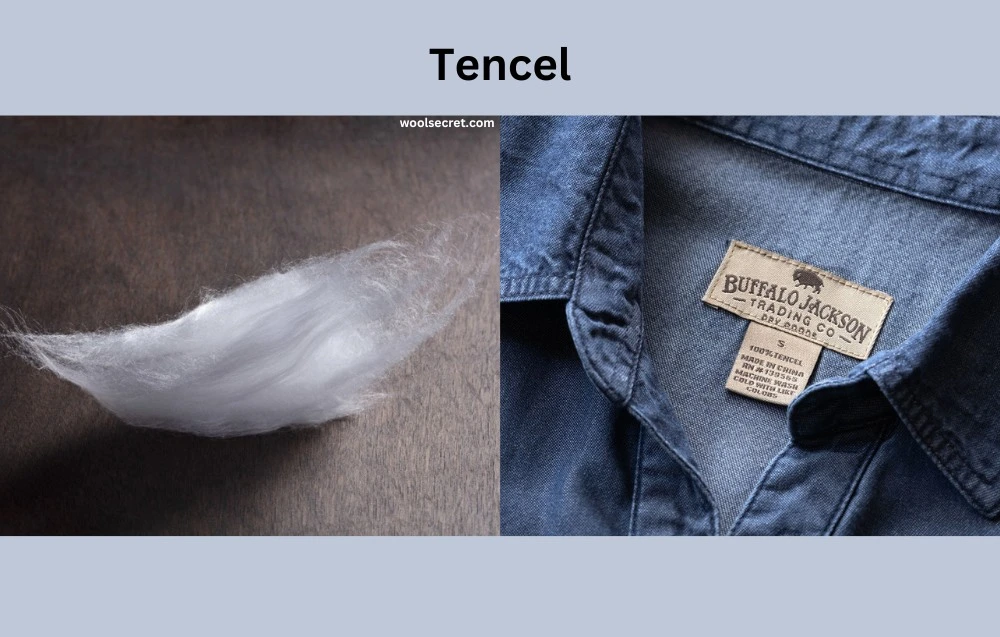
The process of making Tencel is eco-friendly, as the solvent used is recycled and reused. Its production also requires less water than fabrics like cotton.
A unique feature of Tencel is its softness. It possesses a smooth, silky feel, comparable to high-quality cotton or silk. This makes it breathable and moisture-wicking, a great choice for warm weather or active pursuits.
Tencel is also strong and long-lasting, doesn’t shrink or stretch out of shape easily, and is resistant to wrinkles, perfect for travel or everyday wear.
Additionally, Tencel is versatile and can be blended with other fibers such as cotton, wool, or polyester, combining the best properties of each material. In the realm of cloth blending technology, many brands utilize this approach.
Specifically, when Comparing Smartwool and Meriwool Merino brands, Smartwool is particularly known for using the best TENCEL™ Lyocell fibers in blends to create activewear.
For instance, Tencel blended with wool creates a fabric that’s soft, breathable, and warm, offering an ideal balance for comfort and functionality.
7-Recycled Polyester
Recycled polyester has become a popular alternative to merino wool. I was excited to try it out and compare its performance.
It aligns with my values of sustainability and reducing environmental impact, being made from post-consumer waste like plastic bottles, saving them from landfills and the ocean.
In many ways, it’s similar to merino wool, boasting moisture-wicking and quick-drying properties, which makes it a great choice for outdoor activities or workouts. Understanding the Characteristics of Merino wool can provide further insight into why it performs so well in these conditions.
Brands like Patagonia and The North Face utilize recycled polyester to create high-performance clothing. It’s durable and breathable, an advantage over some natural fibers.
However, recycled polyester isn’t quite at the same level of warmth or breathability as merino wool. It’s more synthetic and thus, more durable.
One downside is it can be prone to odors if worn for extended periods of time without washing. This requires careful maintenance.
8-Acrylic
Acrylic, a synthetic fiber, serves as a substitute for wool. While it’s not natural or eco-friendly, it is a vegan and affordable alternative.
One of the benefits of acrylic fabric is its lightweight nature and ease of care. It is machine washable and dries quickly, making it a great choice for travel or outdoor activities.
Acrylic is warm and soft, much like merino wool, and is used in a Different Variety of Wool garments and accessories, from sweaters to hats to blankets.
However, a disadvantage of acrylic is that it’s not as breathable or moisture-wicking as merino wool, making it less ideal for intense physical activity where sweat and moisture are a concern.
Moreover, acrylic can be prone to pilling and other forms of wear and tear, meaning it’s not as durable as wool.
9-Hemp
Hemp is favored for its sustainability, being a fast-growing crop that requires less water and pesticides than traditional cotton, making it an eco-friendly choice.
Hemp fibers are naturally antimicrobial, effectively resisting odors and bacteria growth, a feature akin to merino wool. This property is especially beneficial for active wear.
Besides, hemp is breathable and moisture-wicking, making it a great choice for outdoor activities in warm weather. Its breathability is comparable to that of Merino wool in Hot Conditions.
Hemp is also naturally durable, capable of lasting for years with proper care, much like merino wool. Its durability is a significant advantage.
However, a downside to hemp is that it’s not as soft or warm as merino wool. It’s also prone to wrinkling and may require ironing or steaming more than other fabrics.
10-Rayon
For vegans who value cruelty-free clothing, Rayon emerges as a compelling option to consider. Made from natural sources like wood pulp, bamboo, or cotton, it’s free from animal products.
During my research process for this piece, I found myself drawn to Rayon. I was curious to see how it compared to merino wool, so I got myself a Rayon sweater.
The texture and feel of the fabric were surprisingly soft and smooth to the touch. It’s lightweight and breathable, making it comfortable even in hot weather. This makes Rayon ideal for summer clothing like dresses or blouses.
Rayon also has the ability to absorb moisture quite well, making it a popular choice for items like bathrobes, towels, and underwear. Its absorbent quality is great for wicking away sweat.
However, it’s important to note that Rayon shrinks quickly if not washed and dried properly, requiring careful maintenance to retain its quality.
11-Nylon
Nylon is a synthetic fabric frequently used in outdoor and athletic clothing. Though not a direct substitute for merino wool, it’s a good alternative in certain situations.
Its appeal is attributed to its durability, strength, and moisture-wicking properties. Nylon is lightweight, easy to care for, and quick-drying, making it a popular choice for activities like hiking and camping.
However, nylon has drawbacks compared to merino wool. It’s not as warm or insulating as wool and may retain odors and develop pilling over time.
For those looking for a warm and insulating base layer in cold weather, merino wool might be a better option than nylon.
Additionally, as a synthetic material, nylon is not biodegradable, which could contribute to environmental waste, a significant consideration for eco-conscious consumers.
12-Linen
Linen is renowned for being lightweight and thin, making it a desirable fiber for clothes that feel cool and fresh. It’s especially suited for warm climates and coastal areas.
This fabric can absorb a fair amount of moisture without feeling damp, a significant advantage unlike cotton. Its absorbent nature keeps wearers comfortable in humid conditions.
Linen is versatile, used in various products like aprons, covers, and both men’s and women’s wear, showcasing its adaptability across fashion and home decor.
However, a notable disadvantage of linen is its poor elasticity, leading to wrinkles easily. This aspect may require extra care in maintenance.
13-Seersucker
Seersucker, a cotton weave, is particularly suited for warm climates. It is commonly used to make suits, shorts, robes, and shirts.
This fabric is weaved in a manner that gives it a wrinkled appearance, which is a distinctive feature of seersucker. This wrinkled feature helps the fabric to be held away from the skin.
The structure of seersucker helps in heat dissipation and air circulation, making it a comfortable option in hot and humid environments.
14-Ramie
Ramie, a textile made from a specific plant, is known for its strength and durability. It effectively holds its shape and helps to reduce wrinkles.
The luster of Ramie is beautiful and silky, giving it a premium look and feel. This makes it desirable for high-end fashion items.
However, Ramie is expensive due to the fiber’s complicated extraction and cleaning process. This factor limits its accessibility compared to other fabrics.
15-Polyester or Nylon with Silver
Polyester or nylon with silver offers an innovative alternative to merino wool. Infused with silver, it acts as an anti-microbial agent, keeping garments odor-free for longer than other synthetics.
This combination is often used in party and evening wear, where durability and style are crucial. It’s also suited for cold weather and survival clothing, adding a functional edge.
The inclusion of silver in polyester or nylon fabrics enhances their utility, making them a versatile choice for diverse wardrobe needs.
Non Vegan-Friendly Alternatives
16-Cashmere
Cashmere is a luxurious fabric that provides warmth in the cold without the bulk. It not only looks lovely but also packs light, making it ideal for travelers.
The downside to cashmere is that it’s expensive and requires careful handling. A reader says, “I love cashmere. It’s soft and offers a touch of luxury.”
Another reader recommends cashmere for outer clothing, noting, “Try cashmere. It’s not cheap, but it’s light, warm, and washes brilliantly.”
Despite being costly, many users swear by its worth as an investment. Fortunately, things are changing with new brands emerging, offering cashmere products with natural fibers at more affordable price points.
17-Silk
Silk, a luxurious fabric, is known for its ability to keep you warm in the cold and cool in the heat. Its beautiful appearance and feather light packing make it a favorite.
One downside of silk is that it’s expensive, and stains are nearly impossible to remove. This makes maintenance a bit tricky.
A reader recommends silk base layers as a thinner, yet effective alternative to merino wool. They work the same but are lighter.
For those allergic to wool, silk works well as a base layer. A long-sleeve blouse from Spanx offers more warmth without adding bulk.
Another reader stated you can find great silk tops from LilySilk, which are trendy and very packable, perfect for versatile and stylish travel wardrobes.
18-Alpaca
Alpaca, a less common option compared to merino wool, stands out for its warmth. It’s a great fabric alternative for those seeking cozy options.
A reader suggests alpaca as a light and warm fabric. Unlike wool, which some cannot wear, alpaca offers a comfortable alternative. Because it’s hypoallergenic, it’s a good choice for those with sensitive skin.
Alpaca sweaters are praised for being a top layer in many winter wardrobes. They provide warmth without adding bulk, perfect for cold weather styling.
A sweater from Gamboa, made from genuine alpaca, is not only light and warm but also features fibers with microscopic airbags. These garments are delicate and act as excellent insulators.
Reasons For Choosing These Alternatives
Sustainability
For those who care about the impact of their choices on the environment, sustainable options are key. Bamboo, Tencel, and recycled polyester are eco-friendly choices, providing great alternatives to traditional materials like merino wool.
Vegan Friendly
Merino wool, sourced from sheep, is not suitable for vegans or those aiming to avoid animal products. Cotton, hemp, and synthetic fibers offer similar benefits without compromising vegan principles.
Cost
Considering cost, merino wool can be pricey compared to other wool fabrics. For those on a budget, more affordable options like cotton or polyester are worth considering.
Comfort
While merino wool is known for its softness and comfort, there are numerous alternative materials that are just as comfortable. Cotton, bamboo, and Tencel are excellent for everyday wear and outdoor activities.
FAQs
What is better than merino wool?
Compared to merino wool, alpaca emerges as a superior alternative, being softer, stronger, and warmer, while also retaining less water. Its overall impact is more environmentally sustainable, making it an excellent option for eco-conscious consumers.
Conclusion
In conclusion, numerous reasons exist to buy merino wool alternatives. These include sustainability, vegan-friendliness, cost-effectiveness, and comfort.
The market today offers great options like bamboo, Tencel, recycled polyester, cotton, hemp, and rayon. Each alternative material caters to different needs and preferences.
It’s important to consider your preferences and priorities when selecting these materials. The best fit for you might vary based on your lifestyle and values.
By making a conscious choice in the materials you wear, you can reduce your impact on the environment and make a positive difference in the world.


